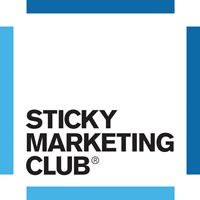Being the first airline to introduce back-of-the-seat screens doesn’t compare, emotionally, with the fast food brand where the food is ‘finger-licking good’ – and there is a reason for that.
In this Vlog, Grant explains that seat-back screens are category-specific – they are not brand-specific. And the difference can affect your business.
If I asked you, which was the first airline that introduced back-of-the-seat screens, so everybody had their personal viewing experience, would you know who it was?
Probably not.
So for those of you at the next pub quiz, I’ll tell you.
It was Northwest Airlines in 1988.
But the fact that nobody knows is really important – because every airline has it today and no one cares.
And that’s because innovation is category specific – it is not brand specific.
Let me give you some other examples…
Do you know the first charity to give a free pen, so people could fill out the form? Probably not. And it doesn’t matter because of course, as soon as it caught on every single charity, when they sent a mailer, sent out a free pen at the same time.
And when you use a drive-thru, do you think to yourself, what a great innovation introduced by McDonald’s in Phoenix?
Of course not, because again, it’s a category innovation and everybody in the fast food world does it today.
Of course, I’m not suggesting that you shouldn’t innovate. Innovation is great, but what I am saying is that it’s very unusual for a company to get a halo effect because as soon as you innovate and it’s any good, it becomes category specific and not your brand specific.
So what brands do need to focus on, is emotion, because emotion is not category specific – it is brand specific.
For example, Nike stand for Winning. And you don’t think of every trainer company like that.
You think of Nike like that.
Nike’s about making people feel that they’re the best versions of themselves.
When you think of food so good, you have to lick your fingers. You think of a brand, you think of Kentucky Fried Chicken, you don’t think of every chicken or fast food provider in the world.
What tends to happen in business is people get so focused on the offering itself, the benefits, all the auxiliary items and everything else, they forget about the emotional connection – the intangible – but actually it’s the emotional connection that really means you stand out.
That really means you have a relationship with your customers that, actually, is so specific to your business that others cannot copy it and it becomes unique.
I would suggest that the fact that Northwest Airlines were the first airline to introduce personalised screens is not very relevant; as opposed to Virgin Atlantic who seem to have created a real emotional connection with their customers and their audience. That’s longer lasting.
There may be small changes to the spoken word in this transcript in order to facilitate the readability of the written English


Comments
wow Grant. this really hits the spot today. i’ll be using this in our next SLT meeting. a lot of time can be spent chasing what we can do to innovate to differentiate. shifting the focus back to basics and what we’re built on.
Hi Jon, I am really pleased that the video resonated and that you can use it in your meeting. Thank you for your comments.
Very insightful, Grant! Focusing on the emotional connection/response when building a brand helps to form that long term relationship (aka bond)… similar to that between a parent and a child. It’s not the latest toy that makes you a good parent; it’s the messages (both explicit and implicit) that the parent gives to the child that they are the most important thing in the world.
Thank you Ariel for your thoughtful comments. I am glad that the video resonated with you.
Keep hammering emotional connection…you are so, so right!
Thank you Chris!